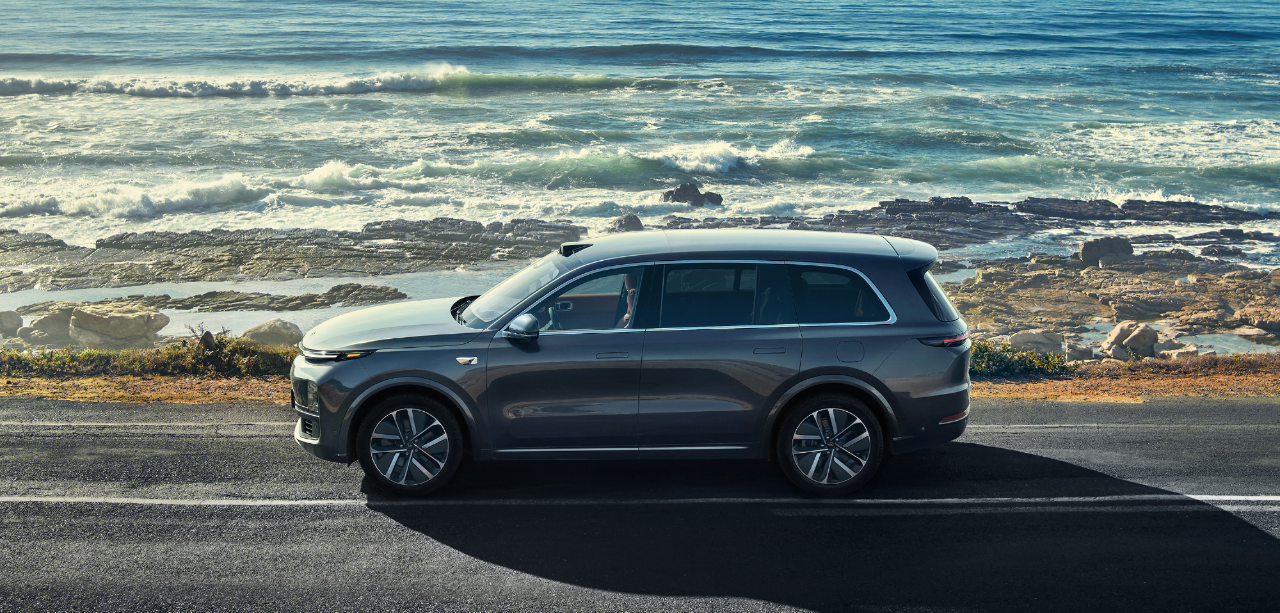Author: Zheng Senhong
On March 10th, NIO completed its listing on the Hong Kong Stock Exchange, marking its second time entering the capital market after its listing on the US stock market in 2018. With the previous listings of XiaoPeng and Li Auto on the Hong Kong stock market, “NIO, XiaoPeng, and Li Auto” are once again reunited.
In the same market environment, NIO, XiaoPeng, and Li Auto appreciate and support each other, and are determined to expand their market. In 2022, the three will extend this relationship to the “400,000-level SUV market”.
From the currently available new car plans, the Li Auto L9, NIO ES7, and XiaoPeng G9 will all make their debut in the 400,000-level SUV market this year, rather than jointly breaking the current “spindle-shaped” market pattern of new energy vehicles.
In contrast, only NIO has tasted sweet success in the SUV market that has reached the 400,000-level. The other two have not yet entered this market.
The latest developments are:
- Li Auto releases the latest information about its second new car, the Li Auto L9, including smart cabins, interaction, sound systems, and seat configurations on a weekly basis.
- In 2022, as a big year for NIO’s new car delivery, in addition to the ET7 and ET5, the ES7 is also poised to be released.
- XiaoPeng continues to maintain a low profile since the debut of the XiaoPeng G9 at the Guangzhou Auto Show in November last year and has no further news.
Coincidentally, all three new cars will debut at the Beijing Auto Show in April of this year, with the Li Auto L9 and NIO ES7 making their global first appearance, and the XiaoPeng G9 likely to unveil its interior for the first time.
Li Auto L9: Flagship, Range-extender, Family Car
As Li Auto’s second car model, the expectations for the Li Auto L9 are very high.
As a mid-size SUV with outstanding product power, Li Auto ONE achieved sales figures surpassing all mid-size SUVs in the Chinese market of Volkswagen in a single month last year and became the only domestic brand-model in the top five of the luxury SUV market in 2021.
For Li Auto L9, not only does it need to inherit the product power of Li Auto ONE, but it also needs to present impressive results to continue the honor of a “best-selling SUV”.
Based on the naming order, Li Auto L9, which is based on the X platform, should be called “Li Auto TWO”, but it has been abandoned to prevent potential puns in the future.The internal code name X01, which has been circulating all along, has not been used. The main reason is that this time, it is a large vehicle. Firstly, the number should be the largest. Secondly, compared to the BMW X7 and the Mercedes-Benz GLS, which have a competitive relationship, it should be one level higher. Therefore, using “L” not only represents the first letter of “length”, but also an ideal first letter.
Recently, Ideal Automobile has successively announced the new car’s name, interior, and exterior, allowing us to have a preview of the interior and exterior of the Ideal L9.
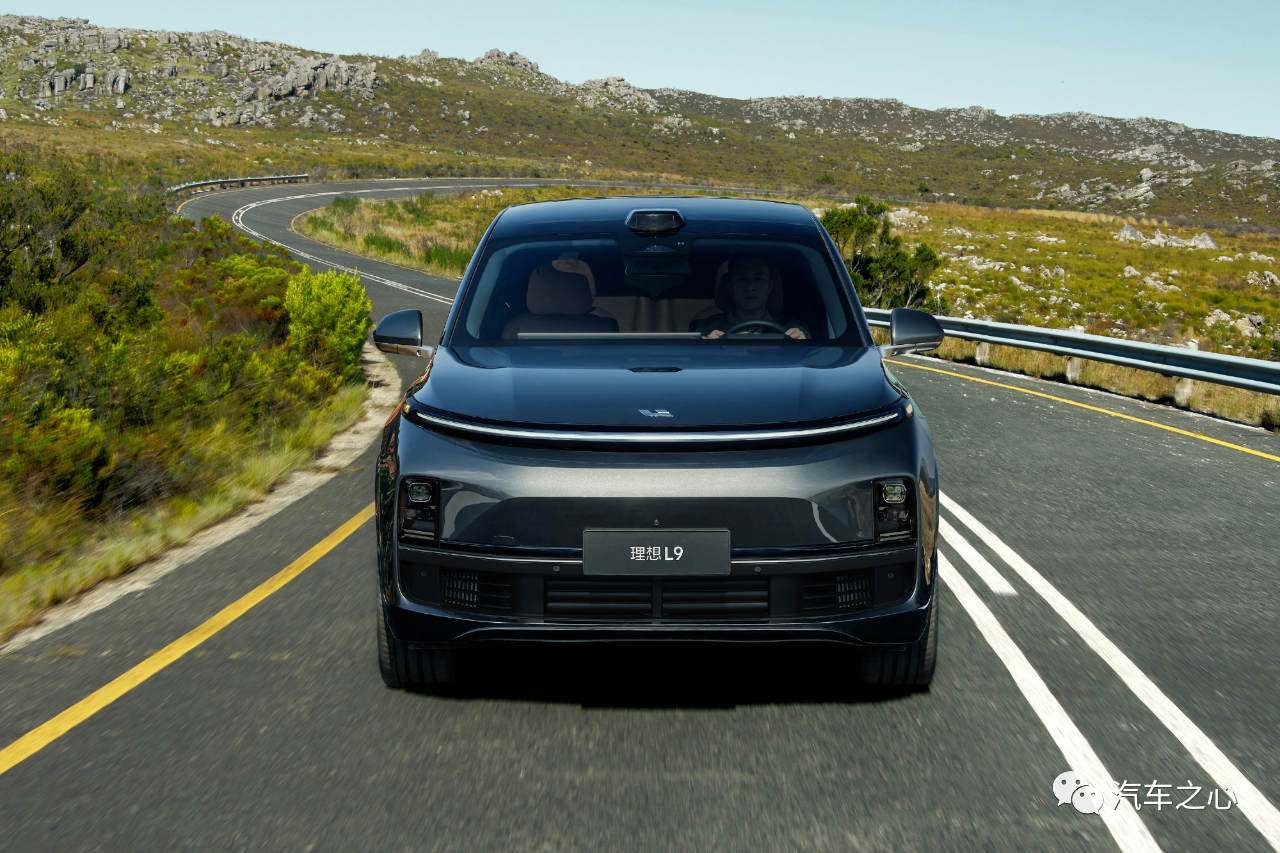
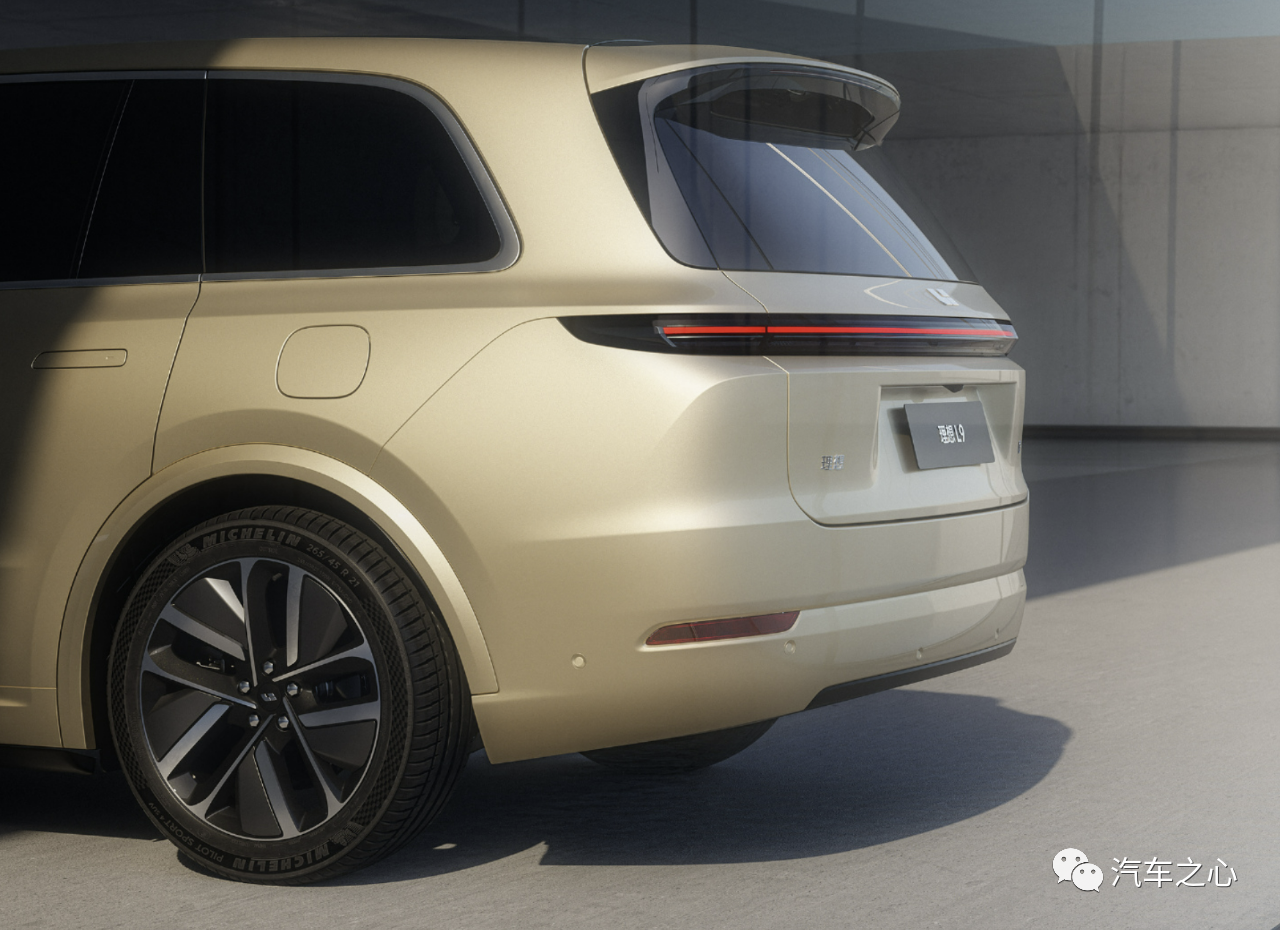
From the official pictures, the front part is very similar to the IdealONE, except that the traditional air intake grille has been replaced with the popular closed-style grille. The side profile of the rear half is slightly more similar to the BMW X7, while the rear is more rounded compared to the IdealONE.
In addition, the position of the Ideal L9’s roof-mounted LiDAR is somewhat different from the current popular design. It uses a tower-type roof layout, and the high-positioned oblique camera is not designed in a “corner” shape, but is located on the connecting rod between the two side mirrors.
The roof part is equipped with the Velodyne AT128 LiDAR, which can achieve a 120-degree field of view and a 200-meter detection range.
From the specific configuration of the sensors, the Ideal L9 is likely to use a combination of five millimeter-wave radars and twelve ultrasonic radars, just like the IdealONE, and is equipped with four surround view cameras and seven ADAS cameras.
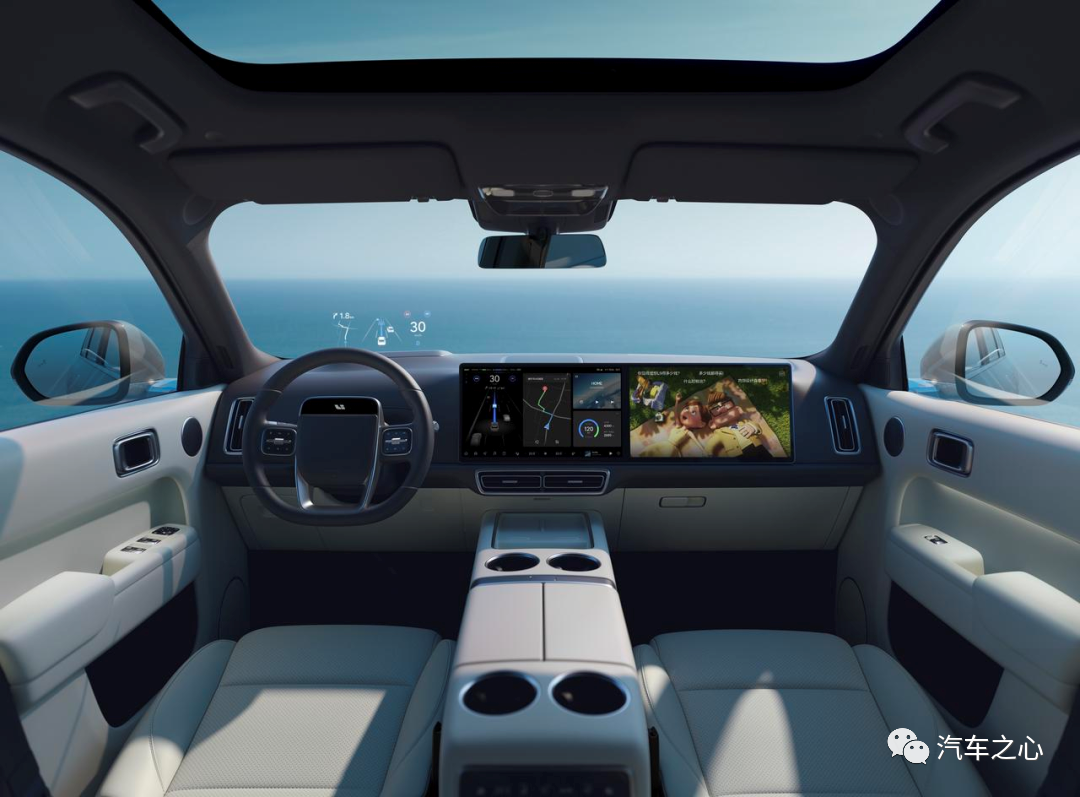
Compared to the exterior, the Ideal L9’s interior, which was recently unveiled by the official, has also attracted a lot of attention from the public:
Ideal L9 adds an innovative 5-screen interactive mode, taking the smart car’s audio-visual and entertainment experience to a new level.
What is most eye-catching is the three 15.7-inch OLED screens that are like three “rules” in the car, including the vehicle control screen, the entertainment screen for the passenger, and the entertainment screen for the back row. All three screens support 3K resolution.
This configuration can be considered the ceiling of all production SUVs currently on the market.
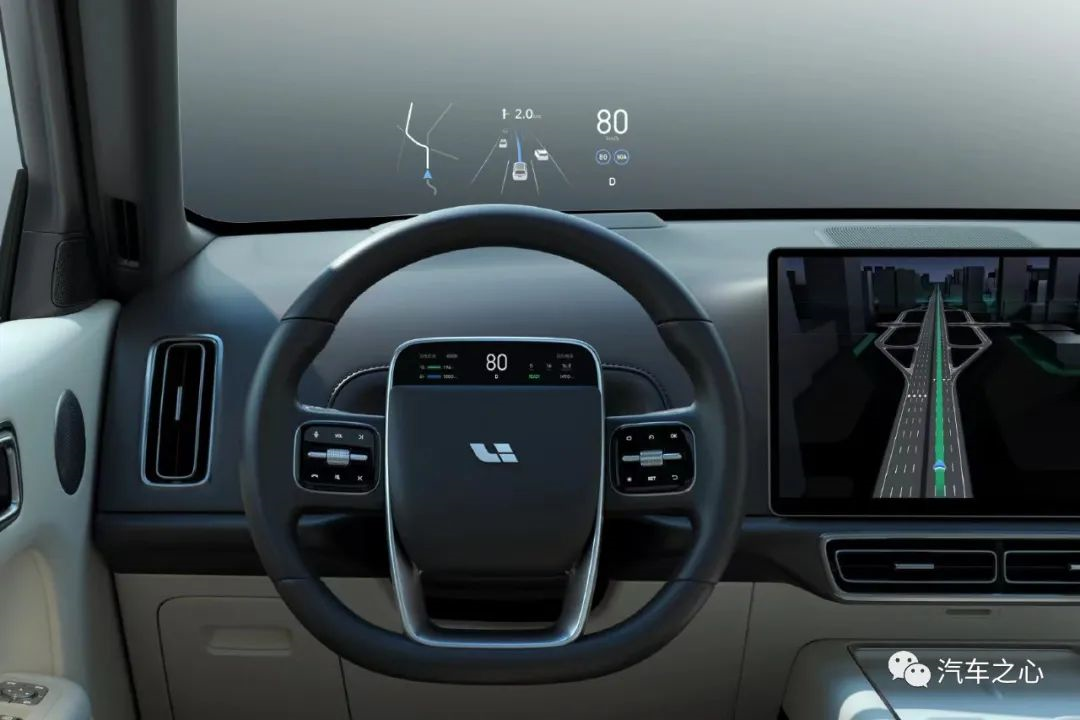 In addition, the smallest and most creative screen among the five screens is called the “Safe Driving Interactive Screen”, which uses Mini-LED and multi-touch technology, and is equipped with a size-observable HUD. In addition to displaying relevant driving information, it can also realize touch-based interaction functions such as navigation and intelligent driving.
In addition, the smallest and most creative screen among the five screens is called the “Safe Driving Interactive Screen”, which uses Mini-LED and multi-touch technology, and is equipped with a size-observable HUD. In addition to displaying relevant driving information, it can also realize touch-based interaction functions such as navigation and intelligent driving.
Like the Ideal ONE, the Ideal L9 is also an extended-range model. However, the Ideal L9 uses a four-cylinder range extender and is equipped with the same Mianyang Xincheng power 1.5T engine that provides power for BMW.
The Ideal L9’s driving motor uses front and rear dual-electric motors:
-
Front motor 130kW, peak torque 200N ・ m;
-
Rear motor 200kW, peak torque 400N ・ m.
The endurance of Ideal L9 will exceed 1000 kilometers, including a fuel endurance of 800 kilometers and a pure electric endurance of 250 kilometers. The pure electric endurance of Ideal L9 not only exceeds that of Ideal ONE, but also that of most hybrid models on the market.
Overall, compared with Ideal ONE, Ideal L9 has made a qualitative improvement and improvement in terms of car, interior, exterior, and sound quality.
NIO ES7: Challenge BMW X5 L
Currently, there is very little information about NIO ES7.
The latest news is only staying at a routine marketing communication meeting of NIO at the beginning of the year. NIO CEO William Li announced that the new ES7 model will be released in April and is expected to be delivered within the year.
We can only piece together its full picture through some fragmented information.
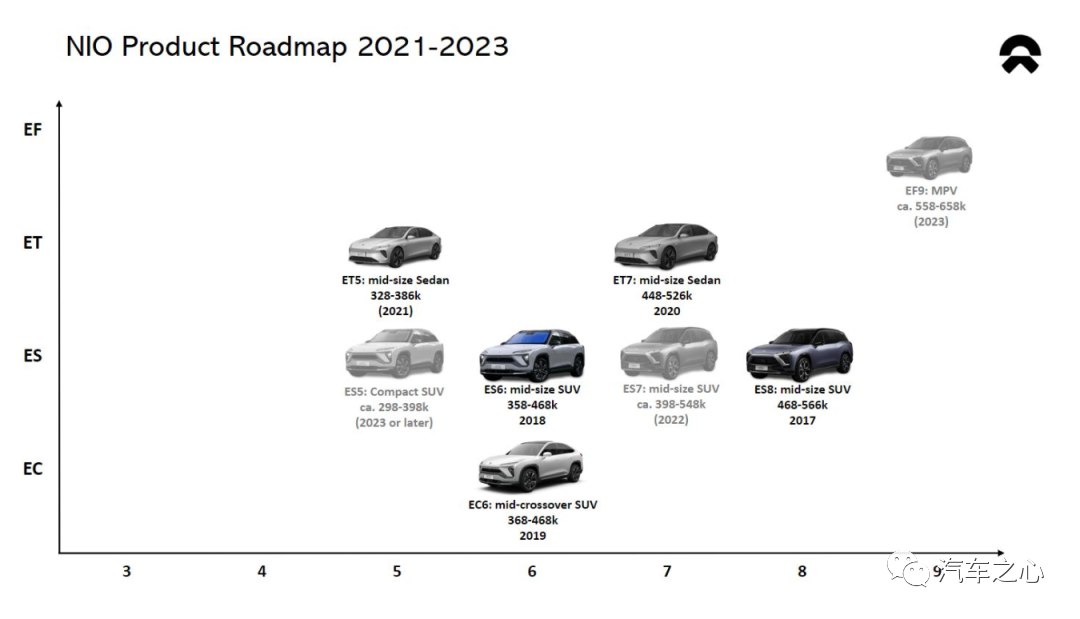
ES7 is actually the previously exposed NIO internal code name “Gemini” twin star model, positioned as a mid-to-large-sized five-seat SUV between ES6 and ES8, and built on the NIO NT2.0 platform like ET7 and ET5.
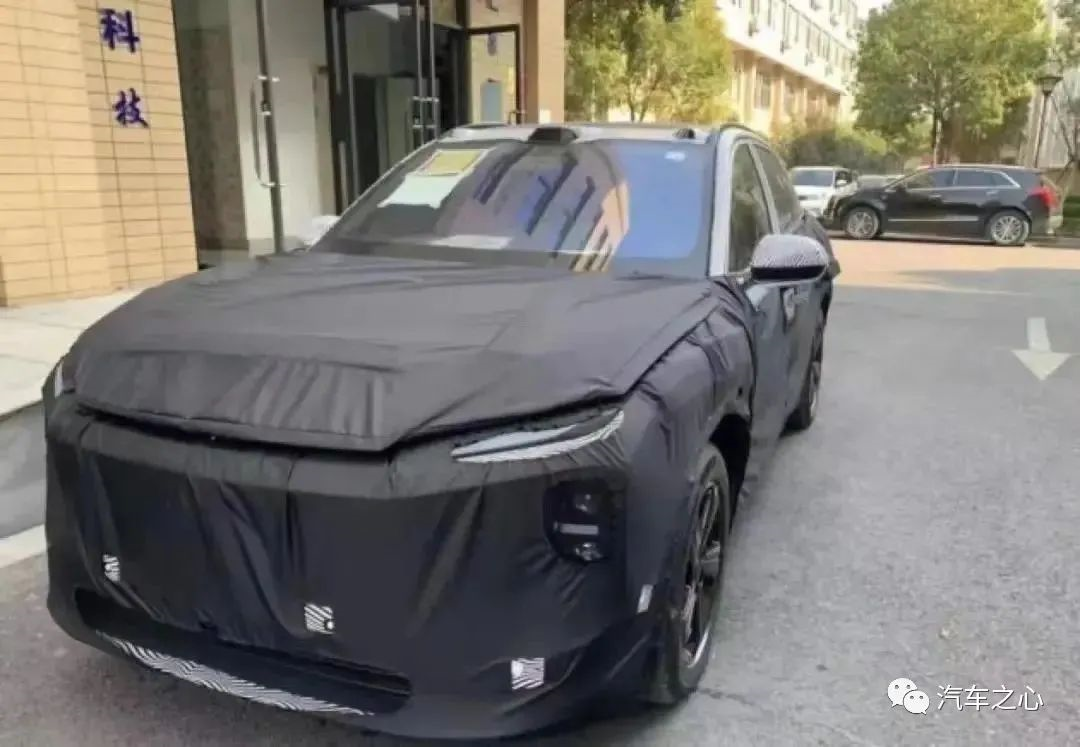
From the previously exposed spy photos, NIO ES7 will continue to use the current family-style design language, and the overall appearance tends to be like ES6, but the body is obviously longer.
It can be seen that ES7 adopts the same design as ET7 and ET5 for the top, that is, the middle “lookout tower” type Lidar and the “corner” shaped high-definition cameras on both sides.
Therefore, combined with the family-style front face design, we can roughly infer that this is a combination of ET7’s roof and ES6’s body.Since the ET7 shares the same roof as the ES7, it is likely equipped with an equivalent 300-line lidar jointly developed by WeRide and RoboSense, with a detection range of up to 500 meters and a super-wide 120-degree field of view.
This is currently the farthest-reaching sensor in the vehicle regulation-level sensors and undoubtedly has the strongest performance.
The ES7 is also very likely to be equipped with lidar, NVIDIA Drive Orin chips, Aquila super-sensing systems, Adam supercomputing platforms, and the Qualcomm Snapdragon 8155 vehicle chip.
In other words, the hardware level of the ES7 is at least on par with that of the ET7.
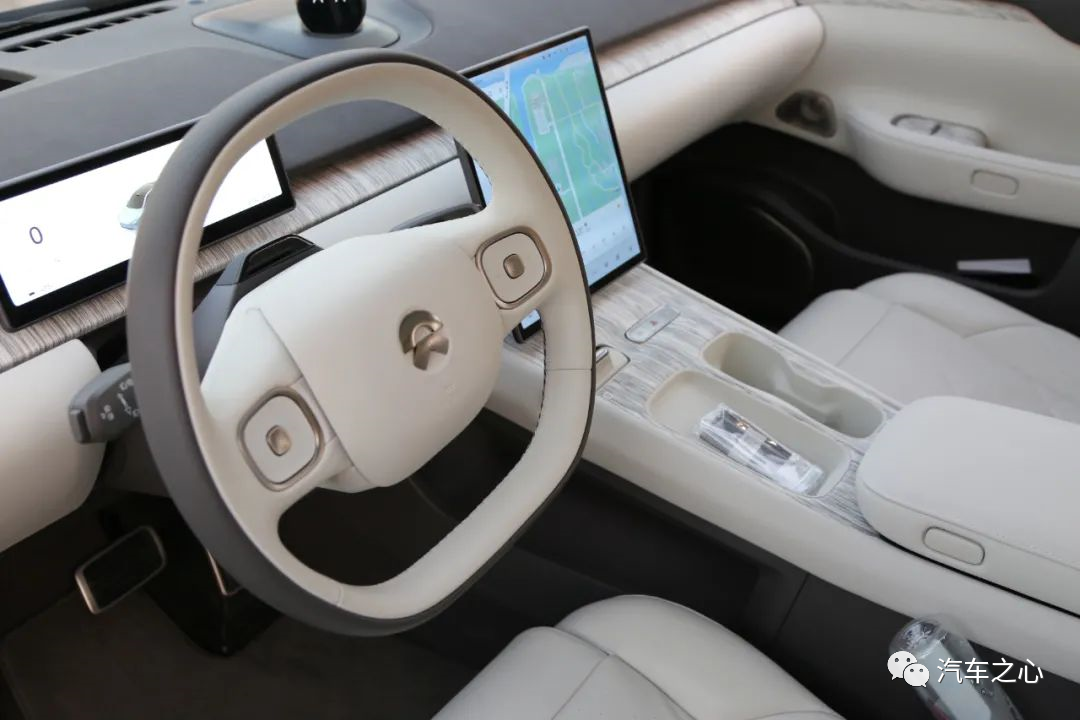
As for the interior, there is still no further news about the ES7, but it is unlikely to deviate from the extremely simple design of the ET7 and ET5.
Designs such as the 10.2-inch LCD instrument panel, 12.8-inch AMDLED central control screen, extremely advanced materials, and the ceiling-level audio system are all unlikely to be absent.
From the ET7 public test drive some time ago, it can be seen that NIO’s interior design trends more toward the “second living room” route that presents warmth, technology, and luxury simultaneously.
This minimalist smart cabin creates a sense of technology and gives you a direct sense of luxury.
In terms of price, based on its positioning between the ES6 and ES8, the body size and price range of the ES7 are also roughly between the two, with a length of about 5 meters, and it is mainly targeted at the 400,000 to 500,000 yuan market.
If the battery rental scheme BaaS is used, the price will be reduced by about 100,000 yuan.
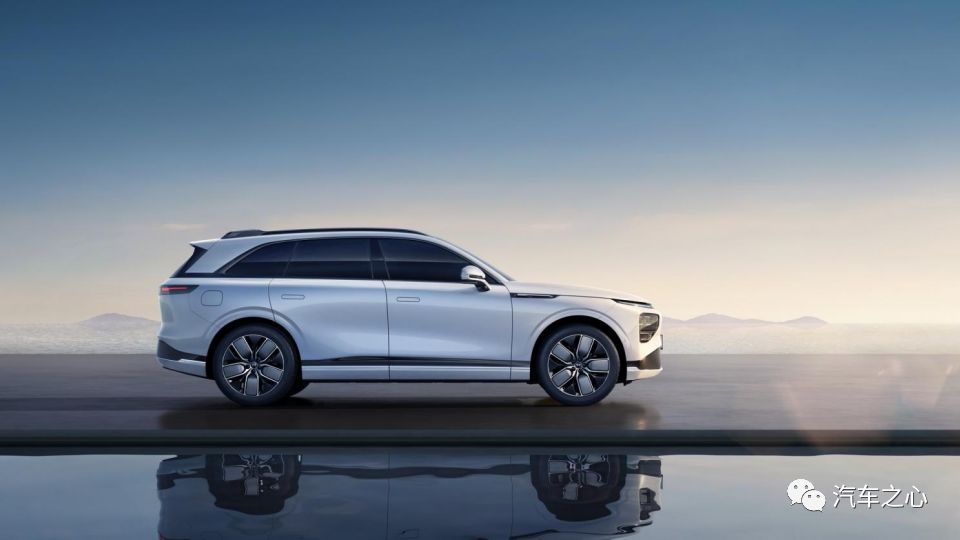
Xpeng G9: Both Beauty and Substance
Compared with the Ideal L9 and the NIO ES7, the Xpeng G9 is the only model that has announced its appearance and presented the entire car intact to the public.
However, the official has yet to release information on the body size, endurance, interior, and price.
Xpeng’s product line currently has two platforms:
- One is the David platform, which defines a 2600-2800mm wheelbase;
- The other is the Edward platform, which has a wheelbase of 2800-3100mm.
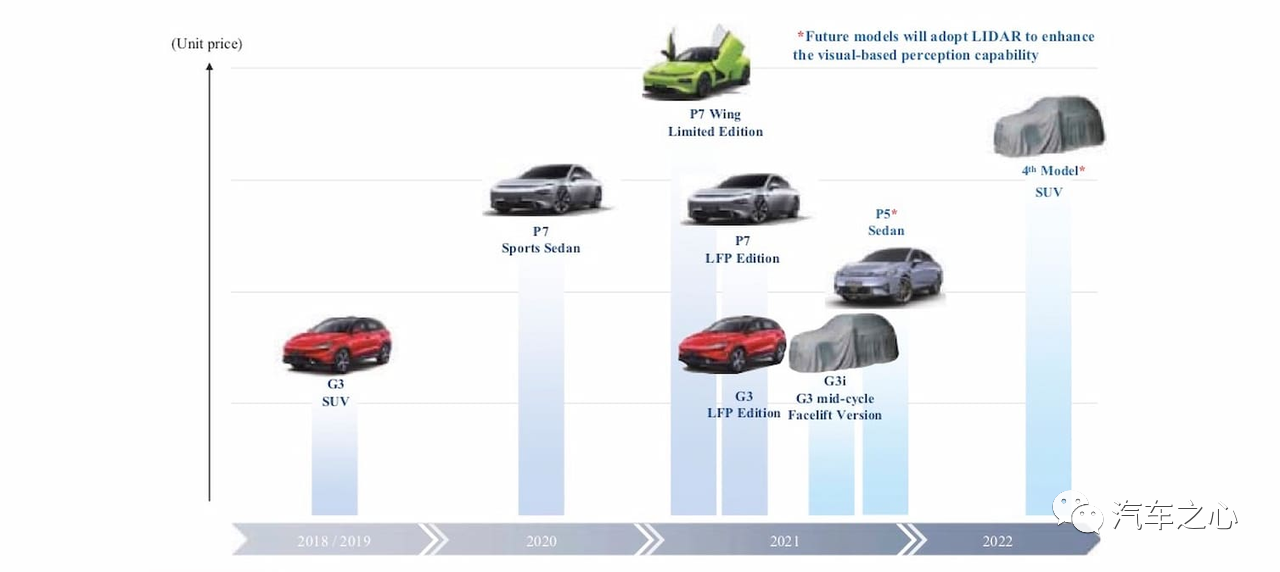
Among them, the G3 and P5 are based on the David platform, while the G9 and P7 are based on the Edward platform.From the appearance, it can be seen that XPeng Motors’ latest model, XPeng G9, still inherits the current family-style design of XPeng Motors, including the commonly seen elements such as the X Robot Face in the front, the running-through daytime running lights, and the large-sized smoked black spoiler.
At the same time, the integration of the laser radar with the headlights on both sides is also a highlight of XPeng G9, which is similar to that of its sibling P5. Compared with the solution of protruding a piece on the side or top of the car body to place the radar components, this design looks more coordinated.
Although the layout of the two radar sensors on G9 is similar to that of P5, the laser radar suppliers of the two vehicles are different. P5 is equipped with Livox from DJI, while G9 uses the MEMS laser radar M1 from SureStar.
Regarding the camera, G9 will be equipped with two 8 million-pixel forward-looking cameras and multiple 3 million-pixel high-definition auxiliary driving cameras around the body, which is a significant improvement in visual perception compared to the 2 million-pixel cameras on P5 and P7.
At the same time, G9 will also undergo a comprehensive upgrade in terms of urban high-precision map granularity, urban centimeter-level positioning, urban scene automatic driving prediction and planning, and domain controller architecture for high-speed communication, optimizing the NGP effect in urban areas.
In addition, G9 will adopt a new electronic and electrical architecture X-EEA 3.0, which XPeng calls the industry-leading first-generation electronic and electrical architecture.
The core of this architecture is to synthesize multiple vehicle processing modules that were previously scattered into a high-fusion hardware architecture with a central supercomputer and multiple regional controls.
In simple terms, it uses a central processor with a strong computing power to complete tasks that were previously completed by multiple modules, thereby achieving higher efficiency.
This architecture can support more powerful auxiliary driving sensor hardware, making it the first mass-produced vehicle to support the XPILOT 4.0 intelligent auxiliary driving system.
At XPeng’s technology day event last year, XPeng first released the NGP city-level navigation auxiliary driving system and confirmed that it will push this feature to consumers along with the XPILOT 3.5 system version in the first half of 2022.
At the same time, XPeng also defines XPILOT 4.0 as a full-scenario intelligent auxiliary driving system, but there is currently no news about XPILOT 4.0, just like G9, which has only reached 2021.
In addition, following XPeng’s rhythm, G9 may become the first mass-produced car on the 800V high-voltage SiC platform in China, achieving the ability to supercharge for 5 minutes and supplement energy for over 200 kilometers, and laying out 480kW high-voltage supercharging piles in China, while Tesla’s V3 charging pile currently has a maximum charging power of only 250kW.
In order to reduce energy loss, Xpeng has introduced silicon carbide power elements to the electric drive system.
Compared to traditional IGBT, silicon carbide is generally believed to provide a 3%-6% increase in range for vehicles by significantly reducing energy losses during inversion.
The drive system of the G9 is based on an 800V high-voltage platform and equipped with silicon carbide elements, which is expected to increase its range performance by about 10% compared to the same level of vehicle currently on the market, and its NEDC range is expected to be around 650 kilometers and even potentially exceed 700 kilometers in the single motor version.
The SUV Market Battle of the Xpeng Trio
In the crowded SUV market, every brand has brought out its strongest platform.
Ideal L9, NIO ES7, and Xpeng G9 represent the strongest product designs and R&D capabilities in the new energy sector for China’s new forces and even the entire new energy industry.
Product-wise, the Ideal L9, as a full-size SUV, further utilizes the “car and home” concept to create a new era of super-daddy cars by combining familiar, perfectly fitting experiences.
From its appearance alone, Xpeng G9 showcases a distinctively advanced air with its minimalist and pure design philosophy, which is well suited to Tesla’s user base. It serves as the flagship product of Xpeng, bearing the responsibility of promoting the brand, demonstrating Xpeng’s complete intelligent driving technology, and occupying the ecological position of large-scale pure electric SUVs in the new energy market.
As for the NIO ES7, even in a market that has been contested for many years, such as the “866,” it is not an upgrade of any first-generation SUV product of NIO in terms of positioning and specific product capabilities, but rather a further subdivided market.
As NIO CEO Li Bin put it, “The luxury brand market has a total volume of about 3 million vehicles, and NIO aims to achieve a third of the world in five years or more.”
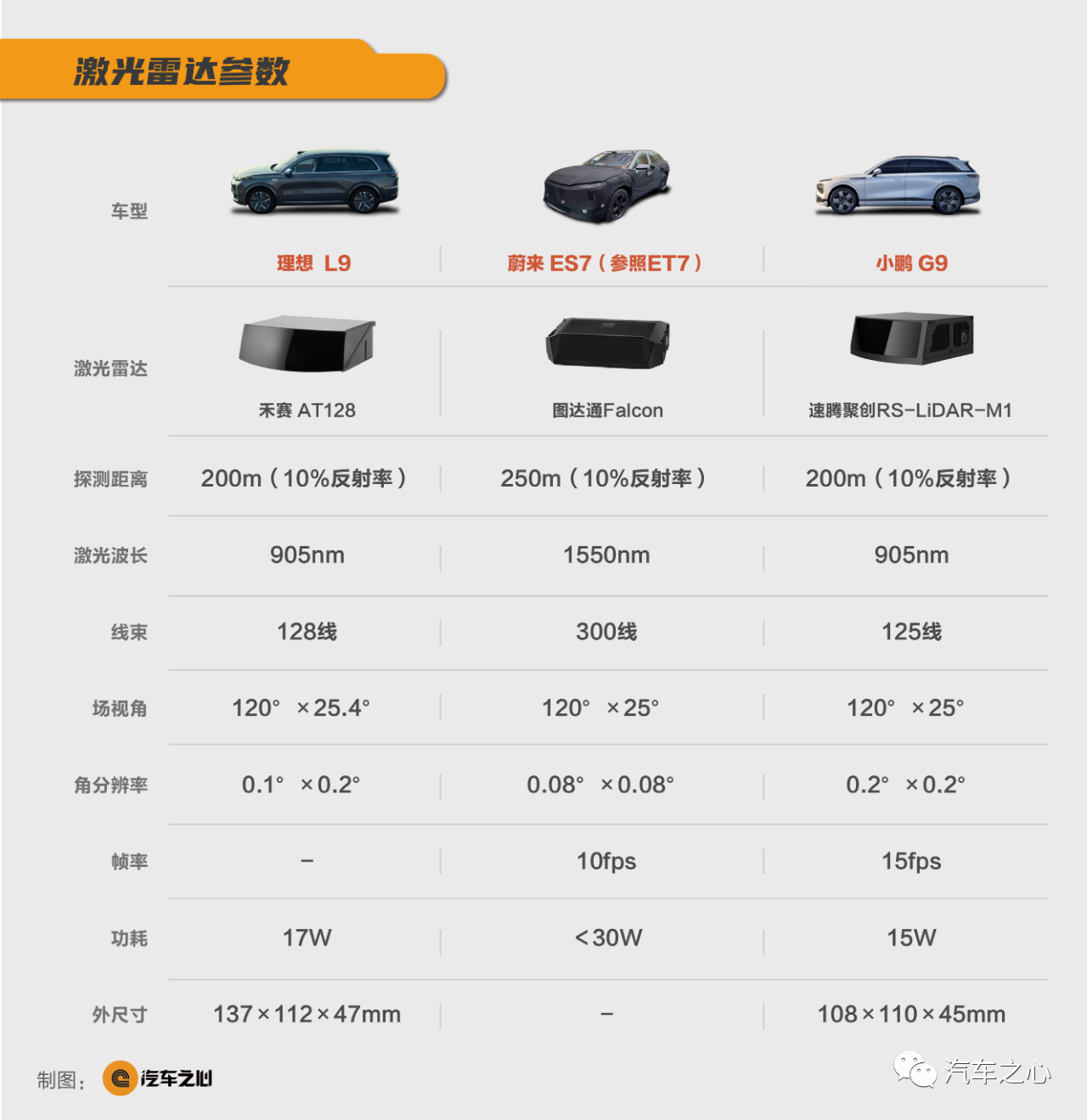
As Xpeng moves into a new stage with the L9, ES7, and G9 models, all three are equipped with technologies such as lidar, high computational chips, and 8 million pixel cameras.
In the context of hardware convergence, the three companies have also adopted fully self-developed autonomous driving algorithms. At this stage, Ideal AD, NIO NAD, and Xpeng XPilot have more or less outlined their vision for autonomous driving.
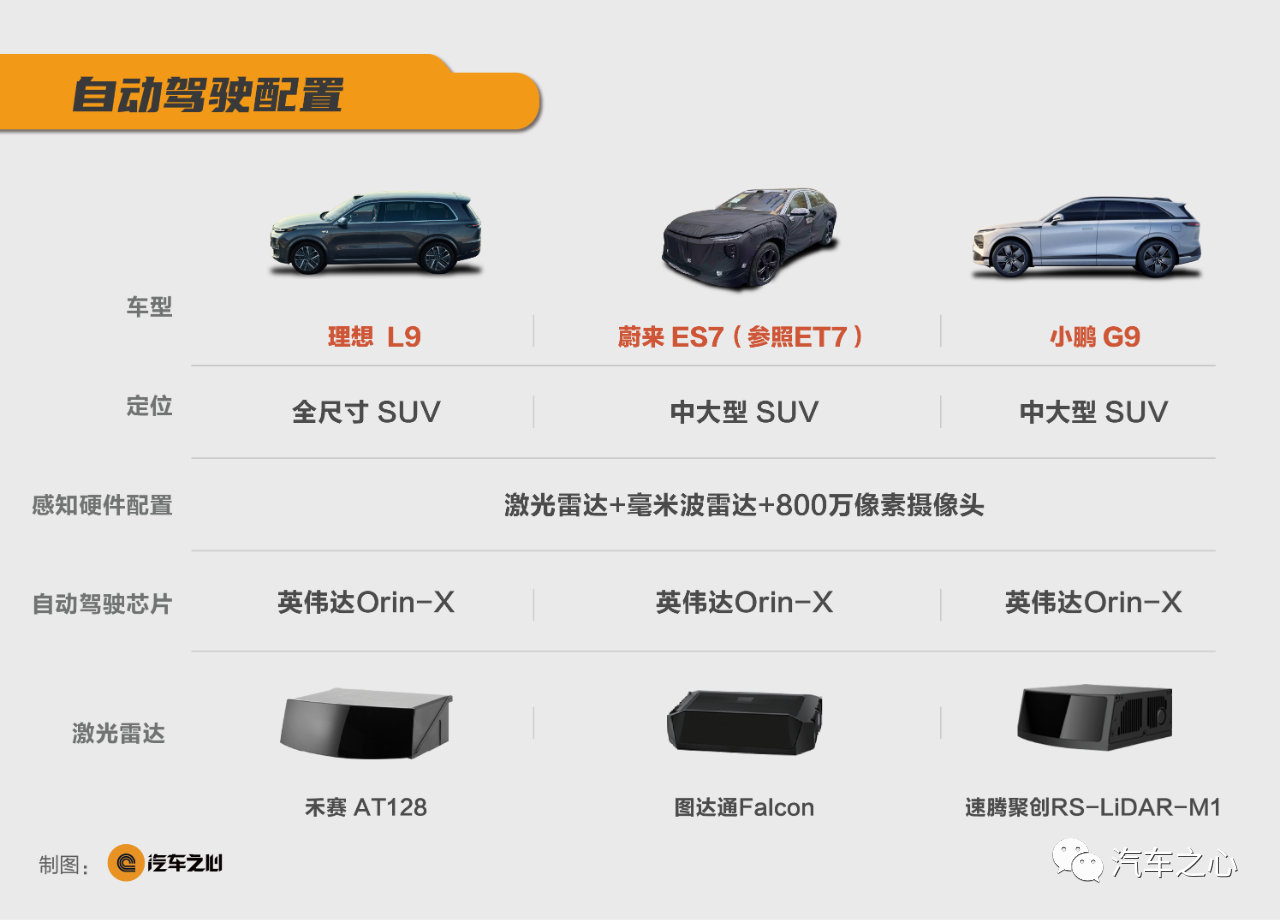 With the arrival of these three models, no other domestic car company besides WM Motor has simultaneously tapped into the “highway, city, parking” 3 scenes.
With the arrival of these three models, no other domestic car company besides WM Motor has simultaneously tapped into the “highway, city, parking” 3 scenes.
With the debut of many heavyweight “weapons”, WM Motor’s previously stable and harmonious development is bound to be disrupted and they will be thrust into battle with their competitors. The rankings race in the new car industry is becoming increasingly exciting.
This article is a translation by ChatGPT of a Chinese report from 42HOW. If you have any questions about it, please email bd@42how.com.
